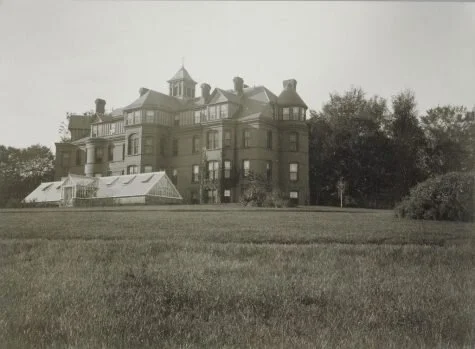Time to take a walk!
Have a lot of time on your hands? Looking for a place to go for a walk? Then, you are in the right place. This city called Concord, NH, may be one of a dozen by that name (That list includes one in Australia and one in Canada). So what makes this one so special? Well, this is the only capital city called Concord. And, while more than one politician has confused us with Concord, MA, we weren’t named for that city. First called Pennacook, after the Abenaki name — it then became Rumford. But then a not-so-pleasant boundary argument broke out between Bow and Rumford. It was settled, and in 1765 the new reformed Town of Concord emerged — named based on the new “concord,” or agreement, between the once-feuding towns.
But before the Europeans arrived, the first settlers were the Abenaki, an Algonquian-speaking nation. They traced their roots north into what is today Canada. But, before European contact, the Abenaki were made up of many smaller communities that came together as their populations were decimated by the Europeans' diseases and conquest.
But, back to that walk… Yes, there is the State House — and all the traditions and pomp associated with it. But one thing that stands out in a state dominated by mill cities-is that Concord’s economy shifted and changed many times through out its past. Printing was an early industry in the city on the Merrimack. Then came the word famous Concord Coach and carriage making. After that came the granite quarrying in the hills around the city. By the late 19th century Concord was the railroad capital of New Hampshire, with lines running in every direction. The city boomed with railway shops.
So, here is our get out and walking tour of Concord:
The City Library-The City Library is a Deco gem, a real rarity in New England. The old library had given way to the 1938 State House Annex, so a new library building was dedicated in January 1940. Built of granite, with a more subdued late Deco style, the Library’s streamline look and clean lines are a real landmark worth visiting.
Fun fact- after it opened, the population of Concord had hit 27,171 and more than half the people in the city had a library card!
The "Concord Gas Light Company” Gasholder House is on Gas Street, and looks like a castle from I93. Built in 1888, it is the last such structure in the United States in which the internal gas containment unit is intact. It was listed on the National Register of Historic Places in 2018. Despite its beauty and rarity, its future is uncertain.
Fun fact- The gas holder was only used up to 1921, when a new steel gas holder took its place.
The Hannah Duston Memorial State Historic Site is an idillic shore with a 1874 35-foot statue in Boscawen. Set on a small island at the meetings of the Contoocook and Merrimack Rivers, this is the first memorial to Duston. William Andrews, a marble worker from Lowell, was the artist. Huge crowds overwhelmed the island on the day of its dedication, with speeches ran all day long. The first publicly-funded statue in New Hampshire, today it mostly stands alone.
Fun fact- Duston’s tale has become quite controversial.
The State House - The New Hampshire State House was planned in 1814 and built between 1816 and 1819. The work of by architect Stuart Park, it was funded for by the City of Concord. From the outside, the Greek Revival style includes an entrance supported by Doric columns. The balcony above is lined with a balustrade separated by Corinthian columns supporting a pediment.
The windows on the first floor are rectangular in shape, those on the second floor are arched, and those on the third floor are square. A statue of a gold-painted wooden war eagle looking left was added in 1818. It was replaced In 1957 with solid eagle statue looking right, with the original eagle now on display at the New Hampshire Historical Society.
State Hospital Grounds - The New Hampshire State Hospital dates to 1842. After more than a decade of planning a the Legislature chartered the New Hampshire Asylum for the Insane in 1838. The name was changed to the New Hampshire State Hospital in 1901. Set on 120 acres, the Hospital had a farm and open fields. The green natural environment was therapeutic, with several ball fields. The Hospital grounds were extensively plantings and trees with ponds. Today the majority of the State Hospital buildings are now state office building. A handful are spookily abandoned.
Walking Tour of Downtown: The buildings and streets of downtown Concord, NH, are a community steeped in tradition, yet well-adapted to change. Concord’s European settlers laid out Main Street in 1726. Farmhouses on modest house lots, soon joined by a few small shops, lined the street; eld lots lay in the Merrimack River oodplain below. In 1803 the First New Hampshire Turnpike opened, linking Concord with Portsmouth cementing the town’s position as an important trading and transportation center. Scores of stagecoaches, wagons and animals traveled down Main Street daily, headed to Boston or Portsmouth.
See the full tour HERE
Yes, there is the State House — and all the traditions and pomp associated with it. But one thing that stands out in a state dominated by mill cities-is that Concord’s economy shifted and changed many times through out its past. Printing was an early industry in the city on the Merrimack. Then came the word famous Concord Coach and carriage making. After that came the granite quarrying in the hills around the city. By the late 19th century Concord was the railroad capital of New Hampshire, with lines running in every direction. The city boomed with railway shops.

